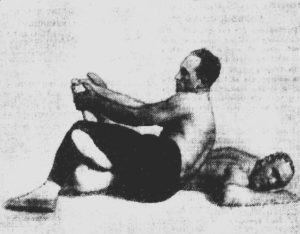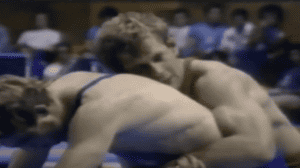There has been a lot of light on Catch Wrestling the last few decades, with athletes like Josh Barnett beating BJJ Champions at their own game and with a lot of great instructional video series on Catch being released with different approaches to common no gi situations such as Neil Melanson’s The Catch Formula.
Who Created Catch Wrestling
Today’s catch wrestling is much different than the catch wrestling of old yet there are still a huge amount of similarities. Catch wrestling was originally developed in 1871 in Britain by a man named J.G.Chambers. Catch wrestling was originally named Catch-as-catch-can and as an amalgamation of 3 English wrestling styles: Cumberland and Westmorland wrestling, Cornwall and Devon wrestling as well as Lancashire wrestling.
Later on Catch would add elements from other styles such as Irish collar-and-elbow wrestling, Greco Roman wrestling, styles of the Indian subcontinent such as Pahlwani, Japanese Jujutsu and Iranian styles such as Varzesh-e Pahlavani. Catch wrestlers would develop moves called hooks, which were submissions and the goal of a catch wrestling match was to pin the opponent or hook them (submit them).
Catch wrestling was more or less a no holds barred wrestling, meaning they would allow any and all holds for the most part except for choke holds – although choke holds are now allowed and used frequently.
Unlike many other modern grappling styles, Catch allows for neck cranks and spine manipulations thus presenting many more options when on the ground. A great example of this is the can opener submission when a wrestler is in his opponents guard – this submission is banned by the IBJJF and the ADCC due to it being a dangerous move – although a highly effective move as well.
What Makes Catch Wrestling Different to BJJ
There are a few specific differences in technique and gameplan that differentiates catch wrestling to BJJ.
The first difference is that catch has much more emphasis on neck cranks and pain compliance submissions than BJJ.
The second difference is the amount of specialized leg locks and spine locks that catch contains in the system, catch was practicing leglocks over 100 years ago while leg locks are just hitting mainstream BJJ within the last decade.

The third difference is that unlike BJJ’s mantra of position before submission, catch believes that creating pain and uncomfortable situations for the opponent opens up submissions and chains of submissions. The use of elbows in pressure points and other pain inducing moves is often seen prior to slapping on a quick and hard hook (submission).
The Influence of Catch Wrestling Globally and Historically
If you look at catch on a global level and within modern history you will see that many modern martial arts have had encounters with or have been influenced by catch wrestling.
The Judo and Catch Wrestling Fight
The year was 1914 and there was a huge combat showdown took place between the world judo champion Tokugoro Ito and the world light heavyweight catch wrestling champion Ad Santel. Ad Sentel won the match and thus declared himself world judo champion.
This did not sit well with the founder and creator of judo – Jigoro Kano who sent over the years 3 of his absolute best competitive judokas to try and defeat Santel, with none of the challengers finding success. Eventually Ito fought Santel again and avenged his loss by beating Santel. It was the first and only time Santel lost.
Luta Livre – Catch Wrestling Reborn in Brazil
Catch also found its way to Brazil only to be reborn as Luta Livre. The year was 1927, the place was Rio de Janeiro and a man named Euclydes “Tatu” Hatem started to teach the public catch wrestling with his own refined techniques. This style soon came to be known as Luta Livre and became the nemesis of BJJ in the 20th century with many famous battles between Luta Livre fighters and BJJ representatives.
Catch Wrestling’s Influence on Iowa Wrestling
2 of the most influential catch wrestlers were Farmer Burns and Frank Gotch, who were American legends of catch. Both Burns and Gotch were born and raised in Iowa and both had illustrious careers in wrestling and catch wrestling ultimately laying the foundation of Iowa’s wrestling culture, mentality and system, in a way they were the grandfathers of wrestling in Iowa. To date, Iowa is a true powerhouse when it comes to wrestling, having produced many National, World and Olympic wrestling champions.
What Can Catch Wrestling Teach Me?
Having an open mind is a path to grappling success, that said, there has been a lot of friction in the BJJ community in regards to catch wrestling and it’s methodology.
Although there is friction in accepting that catch wrestling can offer new insights to certain grappling situations there are also truths that catch can offer some amazing insights into common positions that can create for better positional and submission dominance.
If there is one thing that catch wrestling truly offers it would be the deep knowledge on submission and the intricate small details that make a world of a difference in increasing leverage on a submission. Within this aspect of catch wrestling lies true gold and grapplers of all styles can increase their submission effectiveness by learning catch wrestling.
In Conclusion
Catch wrestling truly is a great grappling style, it is an encyclopedia of submissions and can be added to anyone’s personal and it has a deep and rich grappling history that has impacted many grappling styles we know and love.




